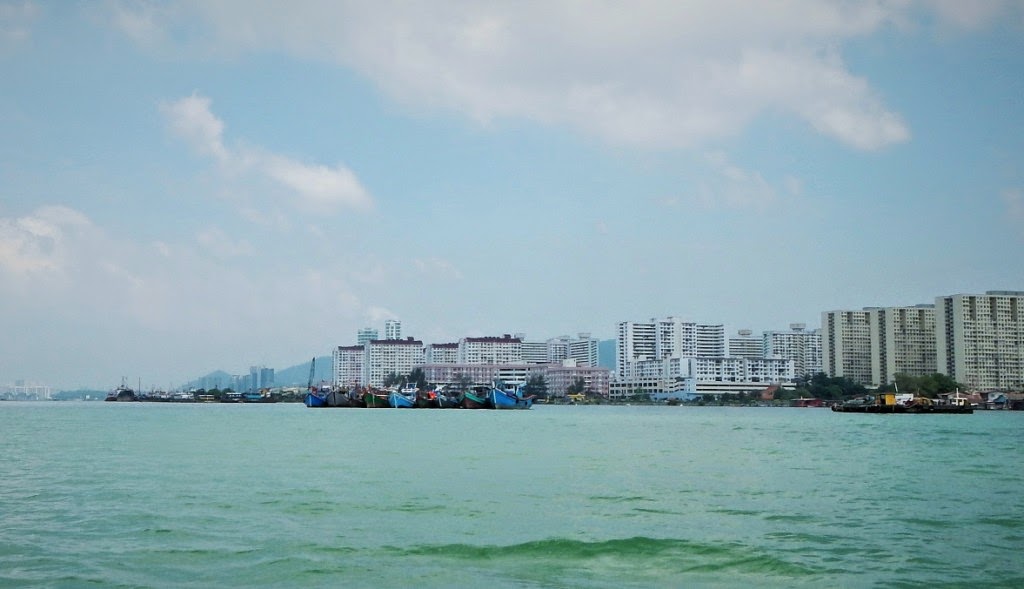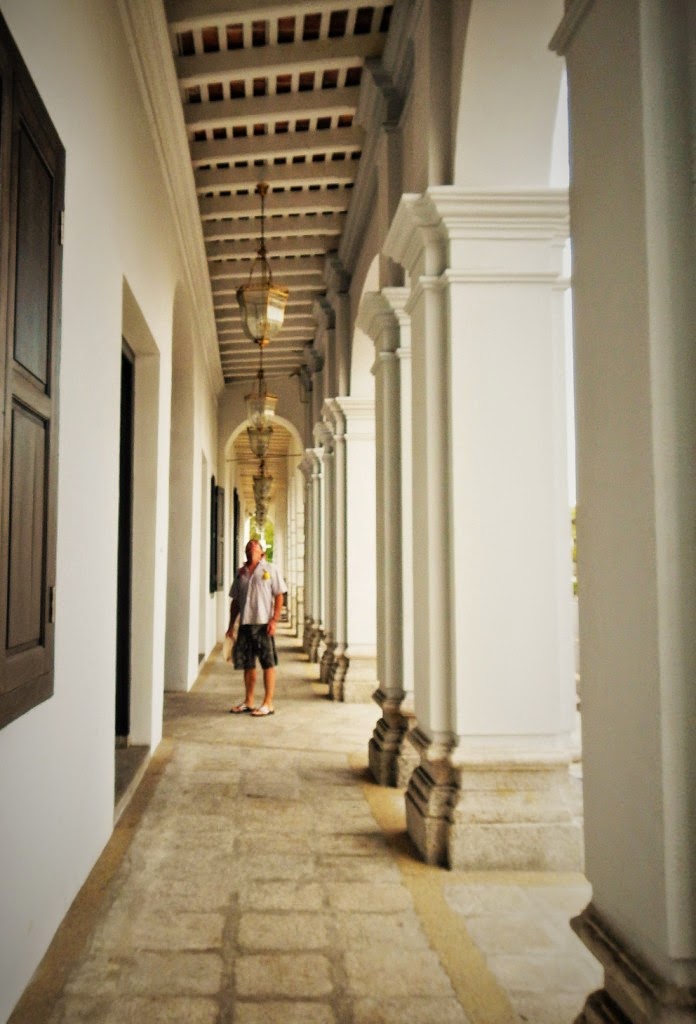As soon as we left Langkawi, we were in Thai waters so our first night anchorage was in a cove on the south side of Ko Lipe in the Butang Group of islands. (The Thai word "Ko" or "Koh" means "island".) It was a short 7.5-hour run that put us in at dark where we anchored out of the west wind on a rocky bottom (N06°29.038' E099°17.904'). Thailand time is 1 hour earlier which made our log entry at 19:30, not 20:30.
The Island looked pretty with a sandy beach but we decided not to leave the boat until we were officially checked into Thailand at Phuket. We had heard stories of other boaters receiving stiff fines for being caught on shore before checking in.
There were a few fishboats and we could see lights from a couple of resorts on land. The west wind swirled around the point all night but we were in a protected spot.
On the 29th, we had a real rocky bumpy 10-hour motor-sail tight into the wind making for Ko Rok Nok which is right next to Ko Rok Nai. We set anchor in the protection of the lagoon between the 2 islands along with 3 other sailboats and a handful of indigenous fishing boats (N07°12.689' E099°04.006'). There we snorkelled the coral reef in front of beautiful sandy beaches. The water wasn't perfectly clear but it was pretty good. It had been a long time since we had seen clear water or snorkelled so it was nice to finally get in and see some coral and fish.
The next day, we made it as far as the protected bay of Ko Phi Phi Don (N07°43.979' E098°46.100'), a 7-hour motor-sail.
Imposing cliffs of Ko Phi Phi Don
Phi Phi has impressive scenery. Tall, limestone, sentinel cliffs protect its palmed beaches, however with its close proximity to touristy Phuket, it is overrun with travellers. It is full of tour boats roaring back and forth, shuttling the invaders of serenity to what's left of the beach. The uncontrolled development has plastered the shore with tacky stalls, hotels, and eateries were one can now only see tranquility in the imagination of times lost,
Next morning (July 31st), we gladly pulled anchor and sailed for 8 hours, past Ko Phi Phi Lei which was the setting for the 2000 movie The Beach (beach hidden from this view).
Location of movie
We beat most of the way on a port tack up into the east sound of Phuket to uninhabited Ko Rang Yai (N07°57.445' E098°26.922') where we shared the peaceful anchorage with only 1 other sailboat and a couple of longtails. (Longtails are Southeast Asian boats that have their own version of an outboard consisting of a motor mounted high on the transom with its propeller extending several metres out the rear, giving the boats their name.) This Island's shoals are said to produce top quality pearls for export around the world. Tiny Ko Rang Yai can be circumnavigated in about 15 minutes!
Longtail - see prop way at the back
There was a huge mansion on Ko Rang Noi, the tiny island right next to our anchorage. It almost seemed to encompass the entire Island and appeared empty while we were there with no lights visible at night.













































